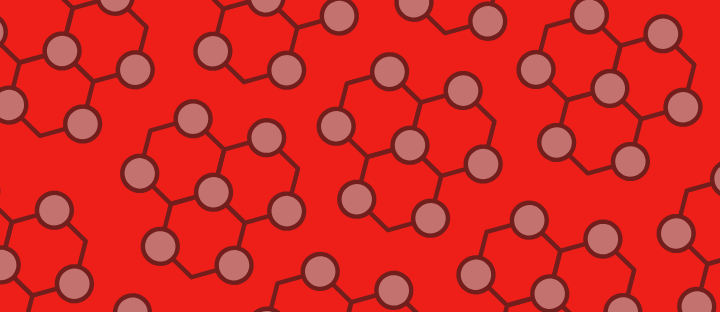Ahead of our 2022 Virtual KAND Family & Scientific Engagement Conference on August 13, 2022, KIF1A.ORG interviewed core KIF1A Research Network members to discuss their #relentless efforts to understand KIF1A and help KAND patients in this special “Meet the Research Network” series on the KIF1A.ORG blog.
KIF1A.ORG’s Research Engagement Director Dylan Verden, PhD, had the pleasure of talking with Kristen Verhey, PhD, a professor of Cell & Developmental Biology at the University of Michigan and an expert in motor protein biology. She discusses her work studying the biochemistry and teamwork of KIF1A motors, and gives her perspective on the important relationship between academic researchers, clinicians, and patients.
Transcript:
Dr. Verhey: Hi everyone, my name is Kristin Verhey, I’m a Professor at the University of Michigan. I got into the field kind of by accident. I was studying just general trafficking inside cells, not really interested in motors, but just kind of stumbled into motors and fell in love with them. Of course, KIF1A is one of the most extraordinary kinesin motors that we know about, so it’s a kind of obvious direction to follow.
Dylan: You mentioned kinesin and KIF1A in particular as being extraordinary motors. At a broad scale, what does your lab study about KIF1A?
Dr. Verhey: We broadly study kinesin motors and how they interact with microtubules, they walk along microtubules, they maybe slide microtubules. Just kinesin motors in general and the things they do inside cells. So for KIF1A, we are interested in how it works as a motor and what kind of cargoes it carries.
Dylan: What kinds of techniques or models do you use to study those kinds of questions?
Dr. Verhey: I’d say sort of two flavors, one is more of a biochemical/biophysical, where we do a lot of single molecule imaging on the fluorescence microscope and we try to observe single molecules and understand how they use the energy of ATP hydrolysis to walk along microtubules or at least interact with microtubules. The second is more of a cell biological approach where we try to study motors and their cargoes inside cells, inside the complex environment of a cell, and try to understand how motors find the correct cargo, how they find the right microtubule track so they are going to the proper destination, so again a lot of fluorescence imaging, live cell imaging.
Dylan: In the context of KIF1A, you’re addressing these questions of how is KIF1A interacting with microtubules and what kind of cargo is it carrying. What kind of questions specifically have you been working on recently in the context of KIF1A?
Dr. Verhey: I’d say three things. First, just trying to understand the basic properties of individual KIF1A motors. So how fast does it walk, how long does it walk before it falls off the track, how does it generate force? All these things are driven by ATP hydrolysis so how does it convert chemical energy into mechanical work? We published a paper last year with Arne Gennerich, KIF1A force generation, so that was really exciting. We’re still interested in that kind of thing. We’re interested in how specific disease mutations impact the basic motor ability of KIF1A. Then I would say we’re also interested in how KIF1A works in groups. So inside cells, on a vesicle, there would be more than one KIF1A motor, so we’re interested in how many, and how do they work together, how do they not interfere with each other? If there are multiple KIF1A or other kinesins and dyneins, how do they all work together to navigate an axon in a neuron for example? Most of the in vitro experiments, the single molecule experiments, we do where we have just isolated the core motor domain of KIF1A to understand its ATP hydrolysis and microtubule behavior. But we’re also interested in the full length protein and the question of autoinhibition, how is it regulated, what is the structure of the molecule? We’re working on that right now.
Dylan: All of these are really in-depth ways of looking at KIF1A and addressing different parts of its structure which is obviously important because we have mutations across several domains in KIF1A. When you’re thinking about your KIF1A research and how it applies to rare disease communities and KAND in particular, do you have any thoughts for the community on how research lends itself to finding better therapeutics or better understanding the progression of a disease?
Dr. Verhey: The KAND community is amazing and I’m just so grateful for the patients and their families and people like Dom and Dylan and the things they’re doing to bring this community together. I think having the basic science researchers and the clinicians talking to each other and hopefully working together is really important and it’s rare. This is my first time in my career that I’ve been involved in something like this, and I’ve really been enjoying it. So I think there’s a lot that the basic scientists can do to look at specific disease mutations and try to understand how they could be causing defects in axonal transport. But we need the clinical people to tell us which mutations should we be studying, are they in a heterodimeric or homodimeric form to impact motor activity? Then we can work together to think about potential therapeutics, we can test therapeutics in cells, they can test them in patients. It’s a really great community, and we need all kinds of different people to come together to think in different ways, to use different approaches, to bring different backgrounds and ideas together, so that we can make a difference for the patients.

